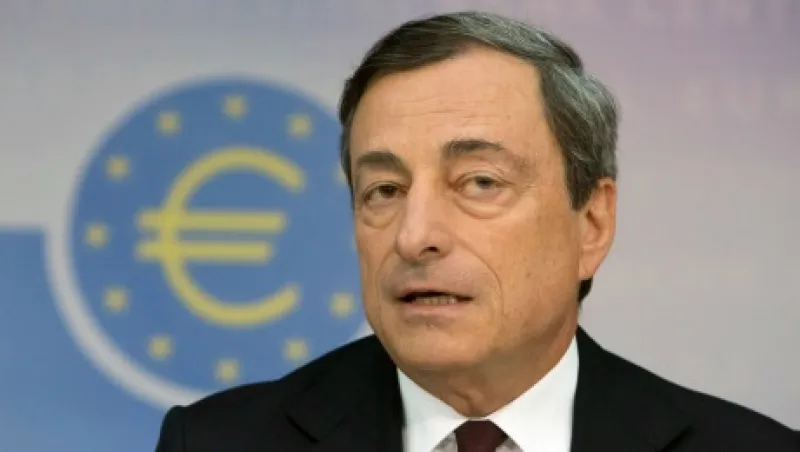The biggest single macro factor facing investors as the first week of September draws to a close is the U.S. August employment report, due tomorrow morning, The job market remains the primary talking point for U.S. Federal Reserve policy, which in turn has trumped all other factors for market sentiment year-to-date. Analysts will carefully parse any shift in structural unemployment for clues to upcoming policy decisions, placing today’s initial claims and releases from payroll processor ADP under the microscope.
European Central Bank rate decision. The ECB cut three primary policy rates today with the refinancing rate reduced to 0.05 percent, marginal lending facility reduced to 0.3 percent and deposit facility at –0.2 percent. With historically high unemployment levels in the region, deflationary concerns and a crisis in eastern Ukraine, expectations were mixed over the likelihood that ECB President Mario Draghi would announce further accommodative measures after the dovish tone of his speech at Jackson Hole last month.
Bank of England Governor Mark Carney holds rates steady. Governor Mark Carney left the U.K.’s benchmark interest rate unchanged at 0.5 percent today, as economic recovery remains mixed and inflation remained below targets in July at 1.6 percent, compared to 2 percent. Scotland’s September 18 referendum on secession from the U.K. has been looming over options on the U.K. pound increase in recent sessions, implying volatility.
Bank of Japan keeps monetary policy status quo. Bank of Japan policymakers opted to make no change in a program to expand the nation’s monetary base during a regular monthly rate announcement today. The bank is operating an asset purchase facility that creates between 60 trillion and 70 trillion additional yen a month. In a news conference after the announcement, Bank of Japan Governor Haruhiko Kuroda commented that a further decline in the value of the yen versus the U.S. dollar would not make a significant negative impact on the Japanese economy.
German factory orders show uptick. In Germany, new factory order data registered a sharp expansion in July: at 4.6 percent over June, the measure beat consensus forecasts to rise by the largest margin in more than a year. Export demand was a primary driver for the upswing at a 6.9 percent increase for the month.
U.S. economic data predicted to be upbeat. A slew of economic data points will be released today. Initial jobless claims are forecast to rise marginally for the week while longer term averages continue to register an improving trend. July international trade data, also due out at 8:30 am, is expected to register an increased deficit of $42.3 billion after the gap narrowed in May and June due in part to a contracting trend in capital goods. The Institute for Supply Management (ISM) nonmanufacturing index release for August is scheduled for today. Analysts predict a marginal pullback from July, when the indicator hit a post-2008–’09 financial crisis high.
Portfolio Perspective: Compelling Opportunities Among European Midcaps — Pieter Taselaar and Thijs Hovers, Lucerne Capital
Highly correlated stock prices characterized European equity markets in July and early August. This environment is clearly difficult for a long-biased, bottom-up stock-picking strategy. We took advantage of price weakness and added to our high-conviction longs, however. Nearly all of the companies in our portfolio have published their second-quarter earnings reports, and we remain enthusiastic about company-specific fundamentals. The ongoing uncertainty surrounding Russia and Ukraine has prevented management teams from providing upbeat statements.
ECB President Mario Draghi gave a speech at Jackson Hole on August 22, in which he rightly showed concern over declining inflation expectations and implied that he would like governments to move away from austerity and toward a more pro-growth fiscal policy. This could complement what the ECB is planning on the monetary stimulus side. We will be closely watching the first tranche of TLTRO on September 18.
As we have previously seen with the crisis in Europe’s periphery, opportunities arise when the multiples of European-listed companies that have large global footprints temporarily contract due to their proximity to the problem area. Today it is the situation in Russia and Ukraine that has provided the opportunity.
On the short side, we continue to search for financially weak European companies that have suffered throughout the extended recession. This theme, in our opinion, plays out the most in the contracting, construction and oil services sectors. We see companies that have taken too much risk and are now being forced to execute their order books at a very low margin. Cost overruns are also becoming evident and we do not believe that consensus estimates are reflecting the potential for severe earnings downgrades.
The implementation over the next few months of various ECB measures will be supportive of risk assets while further reducing the value of the euro. Relative to the U.S. dollar, the euro will act as a tailwind for exporters’ earnings and make the region more competitive. While the tension in eastern Ukraine leaves a question mark, this uncertainty is being reflected in dramatically depressed valuations.
Lucerne Capital Management is a Greenwich, Connecticut–based long-short equity investment firm with a focus on Continental Europe. Portfolio managers Pieter Taselaar and Thijs Hovers have overseen the firm’s flagship Lucerne Capital Fund since its inception in 2002.






